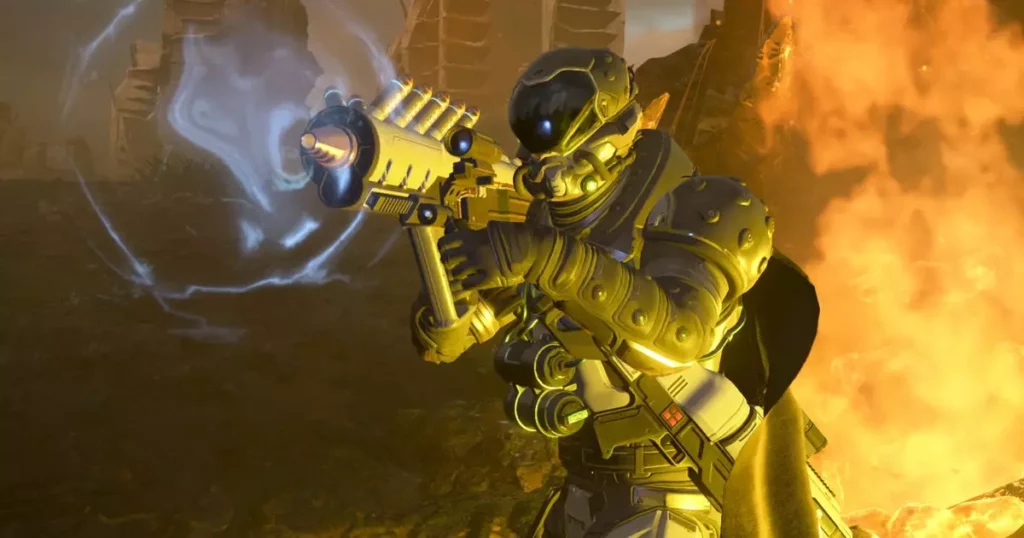In the relentless pursuit of innovation, Helldivers 2’s latest update, the Control Group warbond, challenges players to take dangerous leaps into uncharted technological territory. It’s a testament to a broader trend in game design that seeks to mirror the unpredictable nature of real-world military advancements—where the cutting edge is often fraught with peril. Unlike traditional shooters, which rely on predictable weapons and straightforward mechanics, this expansion thrusts players into a zone where chaos and risk are not side effects but core gameplay pillars. This shift reflects a philosophical stance that embracing danger can elevate the thrill factor and deepen strategic complexity, but it also invites questions of responsibility in design and player agency.
By heavily emphasizing experimental alien technology, the developers seem intent on smashing the illusion of safety often associated with military hardware in gaming. Instead, they promote a narrative where success hinges on mastering unpredictability. Such an approach is inherently flawed if one considers the broader implications; it romanticizes danger as a necessary component of progress, overlooking the real-life consequences of technological failure. Yet, within the context of video games—where the stakes are metaphorical—this gamble injects a compelling adrenaline rush. The risk becomes a mechanism to foster tactical depth and mental agility, demanding players constantly re-evaluate their choices.
Weapons and Gadgets as Turbulent Catalysts for Gameplay
Among the standout innovations is the warp pack, the LIFT-182, which introduces wormhole teleportation. It promises tactical maneuverability, offering a teleportation mechanic that can dramatically shift the battlefield’s momentum. However, this promise is haunted by the inherent danger of destabilizing wormholes with each use—a risk that can lead to catastrophic failure if players push their luck too far. It’s a clever irony: a tool that grants unparalleled positioning potential, yet threatens to turn against its user at any moment. This mechanic embodies a core truth about advanced technology—when you tamper with the unknown, chaos is never far behind.
Similarly, the VG-70 Variable Volley Gun exemplifies versatility but not without peril. Its multiple firing modes compel players to think carefully about when to unleash each setting. A misstep could turn a promising burst into a self-destructive mistake. The plasma weapon, PLAS-45 Epoch, and the laser sentry turrets serve as further examples of how the game’s designers have deliberately incorporated risk into the core mechanics. These aren’t mere gameplay gimmicks but deliberate choices enforcing an ongoing internal dialogue: Should I exploit this power or hold back? The interface between risk and reward is sharpened, making every engagement feel like a gamble with high stakes.
This approach is flawed only if one fails to recognize its true intent—it’s less about entertainment as comfort and more about engagement through tension. The game pushes players to accept that technological dominance comes with a responsibility to manage its dangers. It echoes the real world, where military breakthroughs—whether in AI, robotics, or weaponry—are often as dangerous as they are revolutionary.
The Psychological and Strategic Implications of Embracing Chaos
What really distinguishes this update is how it fundamentally reshapes gameplay psychology. Helldivers 2 ceases to be a mere run-and-gun shooter; it morphs into a battleground of experimentation and improvisation. The unpredictability of these experimental tools compels players to stay alert and adapt swiftly. It transforms fights from predictable encounters into nerve-wracking gambles—turning ordinary firefights into high-stakes poker games.
This tension fosters a mindset that values strategic planning and quick judgment. Success depends not just on firepower but on a nuanced understanding of when to push forward and when to retreat. The presence of gear that can revitalize players temporarily—yet at a cost—further entrenches this duality. It emphasizes that victory is often a matter of timing, restraint, and calculated risk-taking. In essence, the game champions a leadership style rooted in caution and daring equally, mirroring real-world military principles of judicious resource management under uncertainty.
Yet, some may argue this design tilts too far into chaos, risking alienating players who prefer stability and predictable mechanics. For a game rooted in chaos theory and instability, there’s an undeniable danger that it might alienate those seeking straightforward, skill-based combat. However, from a center-right perspective, this risk aligns with a belief that true leadership and innovation often demand venturing into the unknown—a principle that resonates beyond gaming and into broader societal progress.
Broader Cultural and Political Reflections on Risk and Innovation
Embedding such risk-laden innovation into a game reflects a deeper cultural narrative: progress is inherently linked to danger and uncertainty. In political terms, this mirrors a center-right view that promotes responsible risk-taking and individual agency, rather than unchecked safety and regulation. The game’s emphasis on experimental technology as a core mechanic champions the idea that breakthroughs require boldness—often at the expense of stability.
This perspective is compelling when considering real-world military and technological advancements. Innovation, by its nature, involves trial, error, and sometimes catastrophe. For society to move forward, it must be willing to accept the inherent risks, trusting that the potential rewards justify the dangers. Helldivers 2, with its high-octane chaos and unpredictable arsenal, becomes a metaphor for this worldview. It celebrates the daring individual—sharp, courageous, and capable of managing chaos—to forge new frontiers, even if it means flirting with disaster.
Of course, such an approach invites critique from those who prioritize safety and caution—arguments grounded in the desire to prevent chaos and maintain stability. However, dismissing risk altogether neglects the fundamental driver of innovation. Without embracing some level of danger, society stagnates. This game, with its bold experimentation, advocates for a balanced view—where calculated risks can yield significant breakthroughs, but only if managed with intelligence and restraint.









Leave a Reply